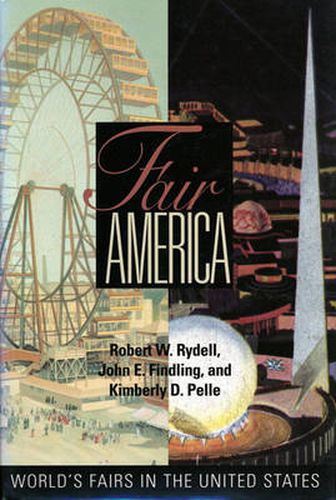Readings Newsletter
Become a Readings Member to make your shopping experience even easier.
Sign in or sign up for free!
You’re not far away from qualifying for FREE standard shipping within Australia
You’ve qualified for FREE standard shipping within Australia
The cart is loading…






Since their inception with New York’s Crystal Palace Exhibition in the mid-nineteenth century, world’s fairs have introduced Americans to exotic pleasures such as belly dancing and the Ferris Wheel; pathbreaking technologies such as telephones and X rays and futuristic architectural, landscaping and transportation schemes. Billed by their promoters as encyclopaedias of civilization, the expositions impressed tens of millions of fairgoers with model environments and utopian visions.
Setting more than 30 world’s fairs from 1853 to 1984 in their historical context, the authors show that the expositions reflected and influenced not only the ideals but also the cultural tensions of their times. As mainstays rather than mere ornaments of American life, world’s fairs created national support for such issues as the social reunification of North and South after the Civil War, U.S. imperial expansion at the turn of the 20th-century, consumer optimism during the Great Depression, and the essential unity of humankind in a nuclear age.
$9.00 standard shipping within Australia
FREE standard shipping within Australia for orders over $100.00
Express & International shipping calculated at checkout
Since their inception with New York’s Crystal Palace Exhibition in the mid-nineteenth century, world’s fairs have introduced Americans to exotic pleasures such as belly dancing and the Ferris Wheel; pathbreaking technologies such as telephones and X rays and futuristic architectural, landscaping and transportation schemes. Billed by their promoters as encyclopaedias of civilization, the expositions impressed tens of millions of fairgoers with model environments and utopian visions.
Setting more than 30 world’s fairs from 1853 to 1984 in their historical context, the authors show that the expositions reflected and influenced not only the ideals but also the cultural tensions of their times. As mainstays rather than mere ornaments of American life, world’s fairs created national support for such issues as the social reunification of North and South after the Civil War, U.S. imperial expansion at the turn of the 20th-century, consumer optimism during the Great Depression, and the essential unity of humankind in a nuclear age.